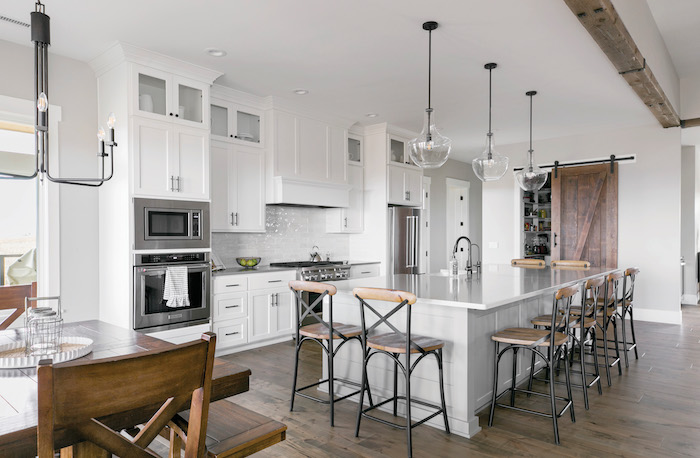Getting Published: Three Tips for Designers

November 7, 2022
Some of our most frequent questions from our business coaching clients are centered around press and the desire to get published. We often hear that our peers struggle with how to start, who to contact and what would be the best content. And we get it! We felt the same way. So we started from the beginning, gathered the information and prepared to WIN!
After years of researching, reading and networking, my goal was to share my work both regionally and nationally. I also understood that there needed to be a mutual benefit and was determined to figure out who in the industry was best to pitch my niche. So, I sought out to find those key magazines and ahhhmazing editors where I felt my projects would not only be accepted but also be cover-worthy.
To date, we have been featured in both national and regional publications with our interior design projects being showcased in over 70 issues, with five designs making the COVER! I truly believe that the three steps that I will reveal below have helped us do so.
Before you get started, the first question I believe you need to ask yourself if you are either preparing to be published or wanting your work featured in a magazine, is Why? Is it for industry presence? Are you wanting to educate the readers? Perhaps your goal is to share your work and drive traffic to your website, converting the readers to clients. Whatever your interest may be, I have found that when you really drill down and spend the time understanding why you want to be published, the road to getting there is so much clearer and the results are so much more satisfying.
During my journey, and now looking back to the last eleven plus years in business I have narrowed down my three top tips to getting a coversStory published in an interior design magazine.
1. Forge Relationships
Building trust, showing up with your authentic self and being consistent are all valued traits when establishing a relationship with a business partner. And many of the magazines that I have either been featured in or have contributed to have been partners for a long time. A matter of fact, I have been providing content to one publication for over eleven years! What I have found to be the most successful result of these true relationships is the ability to understand the editor’s process and expectations. Through years of watching, learning and listening, I have worked very hard to perfect my pitch. When I submit a project, I make it my job to make their job easier. I ask myself the questions needed first so they don’t have to. I now know what ‘i’s to dot and ‘t’s to cross, you might say. What these relationships look like today is, having access to their editorial calendar, knowing deadlines and having the ability to anticipate what to prepare as they are needing it.
2. Tell a Meaningful Story
Have you ever sat down to watch a movie and you see “Based on a true story” flash by at the beginning and you say “uummmmmmm” with excitement? And then at the end of the show they run the credits along with photos and captions that really bring the real story to life? [So awesome!] THAT is what I am talking about when I say have a story that means something, one that will move people and really resonate with the readers. And when you have a project or an event or something that does just that, make it relatable. Tap into what is current, what is of interest and ensure your story tells a tale that could be told over and over again. That makes for a great feature.
3. Document Your Process
Along with your story that is packed with strong content and power words, I recommend having the goods to back it up. And the best way to do that is to have your entire process documented with the how to’s, how’d you do it, what’d you spend, who was involved, before photos, sketches, drawings, material sample pics (and super-deep descriptions of each) and people and faces enjoying every step. Then, of course, the perfectly styled, hi-res after photos, shot with the ideal light in the most attractive angle. Oh, and don’t forget to include your WHY! Now, depending on the magazine, they may take their own photos, but those first impression images are everything – make ’em count! And have a lot of them, don’t leave any corner out! And remember, you are the only one that can tell this story and help the editor visualize every phase. In this case, bigger IS better – the more detail you have the deeper the article will be!
—By Tanna Edler, founder, Tanna By Design
More News
April 19, 2024 | Business
How K&B Brands Handle Product Quality Control
April 19, 2024 | Business
Artistic Tile Paramus Unveils New Location
April 18, 2024 | Business, People
Excelling at Kitchen Design When You Don’t Like to Cook
April 18, 2024 | Awards & Events
KCMA Design Awards Announces Winners
April 17, 2024 | People
WAC Lighting Promotes Becky Li to President
April 2, 2024 | Sponsored
Whirlpool Corp. Brings Purposeful Innovation Home